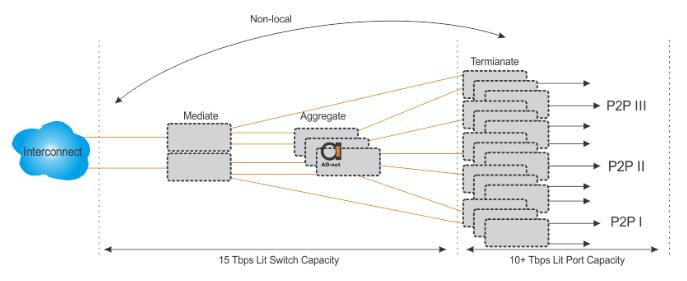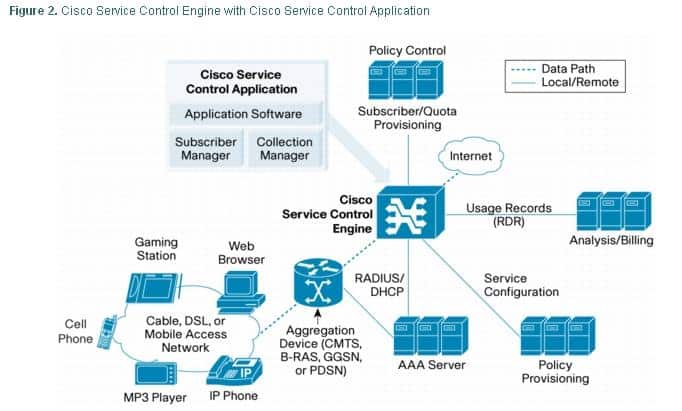The most important decision for the any access network is the correct operational model. After the decision is made, the capacity management becomes the architect’s primary focus. Unfortunately, it is nearly impossible to determine how the infrastructure is going to behave when advanced broadband services will be implemented. Potential capacity issues could be predicted for future using basic assumptions and a good spreadsheet.
Infrastructure covering roughly 200 000 homes using four main paths for the traffic is shown in Figure 1.

Figure 1. Basic traffic flow.
In order to simplify network analyze, we could split potential services into three groups: Existing, Imminent, and Possible. Analyzing independently we could get some reasonable conclusions based on typical usage cycle, bandwidth required and traffic connectivity.
In order to check network stressing readiness advanced services have been deployed. This allows analyze network layers and their capabilities in different scenarios when the links between the layers in the network are stressed beyond their initially deployed levels.
After analyzing the probability of network fail, we assumed that single link with only one subscriber is the least probable part of the network to fail. Nevertheless, the most difficult part of the network to change, located at the end point of the line, is the last one that will require upgrade. Increasing amount of subscribers sharing same link will result in necessary upgrade of a bandwidth. Connection upgrade for the network evolvement will be the most important evolution of infrastructure after the initial deployment.
As several of our most sophisticated customers do with our PON series in their access network, you can use a Cisco SCE1010-2XGBE W/Rack SCE 1000 service Control Engine which is a network element specifically designed for carrier-grade deployments requiring high-capacity stateful application and session-based classification and control of application-level IP traffic per subscriber.
Here’s a what you can do with this, if you consider use it together with AN-E-OLT2000 for example:

That would allow you laserpick and shape or cut out applications that suck out most of the bandwidth, like limiting traffic for large file downloads (consider torrent traffic that are sometimes 24h hour alive), and so on.


